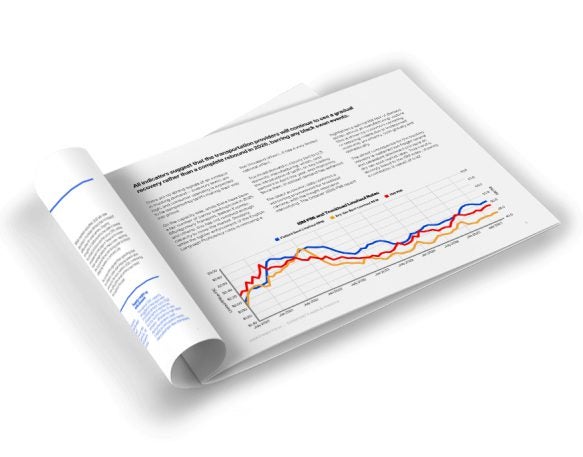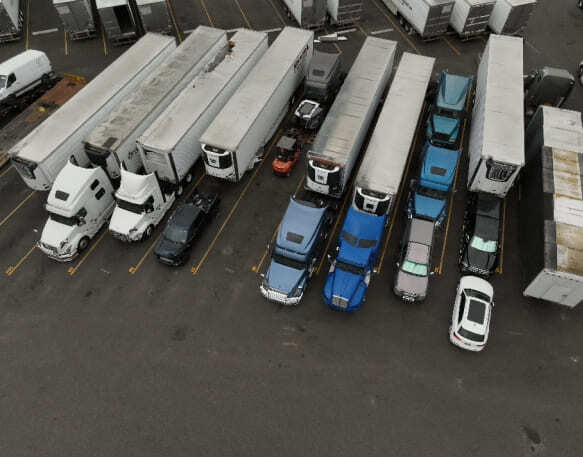Strategies for Optimizing Shipments: Less-Than-Truckload Freight
Less-than-truckload (LTL) freight plays a crucial role in the logistics and transportation industry by providing a cost-effective solution for shipping smaller quantities of goods. Unlike full truckload shipping, which requires a complete truck for a single shipment, LTL freight combines multiple shipments from different shippers into one truck. This approach optimizes space utilization and reduces shipping costs, making it an ideal choice for businesses with smaller, frequent shipments.
In this article, we’ll delve into strategies for optimizing LTL freight shipments, focusing on efficiency, cost savings, and best practices for maximizing load capacity.
Consolidation techniques: Combining shipments, palletization, and cross-docking for efficiency
Consolidation techniques are essential for maximizing the efficiency of LTL shipping. By combining multiple shipments into one, shippers can reduce transportation costs and improve delivery times. Let’s explore some key consolidation techniques in detail:
Combining shipments
Combining shipments involves aggregating multiple smaller shipments into a single, larger shipment. This process is particularly advantageous for shippers who frequently send small quantities of goods. By consolidating shipments, shippers can benefit from economies of scale, resulting in lower per-unit transportation costs.
Additionally, combining shipments reduces the number of individual deliveries, which can streamline logistics operations and decrease the environmental impact by reducing the number of trucks on the road.
Palletization
Palletization is a fundamental technique in LTL shipping that involves stacking goods on pallets. Pallets are flat, portable platforms that allow for easy handling, storage, and transportation of goods. Here are some benefits of palletization:
- Improved Handling: Palletized shipments are easier to handle with forklifts and pallet jacks, reducing the risk of damage during loading and unloading.
- Enhanced Stability: Properly palletized goods are more stable and less likely to shift during transit, minimizing the risk of damage.
- Efficient Space Utilization: Pallets help in optimizing the use of available space within a truck, allowing for more efficient loading and reducing the need for additional shipments.
- Reduced Labor Costs: Palletization streamlines the loading and unloading process, reducing labor costs and improving overall efficiency.
Cross-docking
Cross-docking is a logistics technique where incoming shipments are directly transferred to outgoing trucks with minimal storage time. This method enhances efficiency by reducing transit times and handling costs. Here’s how cross-docking can benefit LTL shipping:
- Minimized Storage Time: By eliminating the need for long-term storage, cross-docking reduces warehousing costs and accelerates the movement of goods.
- Faster Delivery Times: Direct transfer of goods from inbound to outbound transportation vehicles shortens transit times, ensuring faster deliveries.
- Improved Inventory Management: Cross-docking helps in maintaining lower inventory levels, reducing the need for extensive warehousing and associated costs.
- Enhanced Supply Chain Visibility: With cross-docking, shippers can achieve better visibility and control over their supply chain, allowing for more accurate tracking and management of shipments.
Freight class optimization: Matching cargo characteristics with the most cost-effective shipping methods
Optimizing freight class is a critical strategy for reducing LTL shipping costs. Freight class, a standardized categorization used to determine shipping rates, is determined by factors such as density, stowability, handling, and liability. By accurately classifying cargo and matching it with the most cost-effective shipping methods, shippers can avoid overpaying for transportation. Let’s delve deeper into the key aspects of freight class optimization:
Understanding freight class
Freight class is a standardized system developed by the National Motor Freight Traffic Association (NMFTA) to categorize goods based on their transportation characteristics. There are 18 different freight classes, ranging from Class 50 (least expensive) to Class 500 (most expensive). The classification is based on four primary factors:
- Density: The weight of the shipment relative to its volume. Higher density typically results in a lower freight class, as dense shipments take up less space in a truck.
- Stowability: How easily the shipment can be stored and transported with other cargo. Irregularly shaped or hazardous items may have a higher freight class.
- Handling: The level of care and effort required to handle the shipment. Fragile or cumbersome items may require special handling, leading to a higher freight class.
- Liability: The risk of damage, theft, or liability associated with the shipment. High-value or perishable goods may have a higher freight class due to increased liability.
Using the National Motor Freight Classification (NMFC) system
The National Motor Freight Classification (NMFC) system is an essential tool for freight class optimization. It provides a standardized reference for classifying goods based on the factors we touched on above. Shippers can use the NMFC system to determine the appropriate freight class for their shipments, ensuring accurate pricing and avoiding disputes with carriers. Here’s how to effectively use the NMFC system:
- Identify the NMFC Code: Each type of commodity has a specific NMFC code that corresponds to a freight class. Identifying the correct NMFC code for your shipment is the first step in classifying your freight.
- Verify Density: Calculate the density of your shipment by dividing its weight by its volume (in cubic feet). Use density calculators to ensure accurate measurements.
- Review Stowability, Handling, and Liability: Consider the stowability, handling requirements, and liability associated with your shipment. These factors can influence the final freight class.
Carrier selection criteria: Evaluating service levels, transit times, and pricing structures
Selecting the right carrier is vital for successful less-than-truckload shipping. The choice of carrier can significantly impact shipping efficiency, cost-effectiveness, and overall customer satisfaction. Shippers should evaluate carriers based on several key criteria: service levels, transit times, and pricing structures. Additionally, factors such as geographic coverage, specialization in handling specific types of goods, and customer service quality play crucial roles in the decision-making process.
Service levels
The service level provided by a carrier is a critical factor in ensuring successful LTL shipping. Service levels encompass various aspects, including:
- On-Time Delivery: Consistent on-time delivery performance is essential for maintaining supply chain reliability and meeting customer expectations.
- Damage Rates: Low damage rates indicate that the carrier handles goods with care, reducing the risk of loss and additional costs.
- Service Guarantees: Some carriers offer service guarantees, such as guaranteed delivery times or money-back guarantees, providing added assurance for shippers.
Transit times
Transit time is the duration it takes for a shipment to reach its destination. Consider the following:
- Standard Transit Times: Compare the standard transit times offered by different carriers for common routes to identify the most efficient options.
- Expedited Services: For urgent shipments, some carriers offer expedited services with faster transit times. Assess the availability and cost of these services.
- Consistency: Reliable carriers maintain consistent transit times, reducing variability and ensuring predictable delivery schedules.
Pricing structures
Shippers should evaluate the pricing structures of carriers to ensure cost-effectiveness. Key considerations should include:
- Rate Comparisons: Obtain and compare quotes from multiple carriers to identify competitive rates for LTL shipping.
- Accessorial Charges: Be aware of additional charges, such as fuel surcharges, liftgate fees, and residential delivery fees, which can impact the total shipping cost.
- Discount Programs: Some carriers offer volume-based discounts or loyalty programs that can provide cost savings for regular shippers.
Geographic coverage
The geographic coverage of a carrier is essential for ensuring they can meet the shipper’s needs across different regions.
- Service Area: Evaluate the carrier’s service area to ensure they cover all the regions where you need to ship.
- Network Strength: Carriers with a robust network and multiple terminals can offer more reliable and flexible services, reducing the risk of delays.
Specialization
Carriers may specialize in handling specific types of goods, which can be advantageous for shippers with unique requirements.
- Commodity Expertise: Some carriers have expertise in handling particular commodities, such as hazardous materials, perishable goods, or high-value items. This specialization can enhance the safety and efficiency of transporting these goods.
- Industry Focus: Carriers that focus on specific industries, such as pharmaceuticals or automotive, may offer tailored services that better meet the needs of those sectors.
Technology solutions: Utilizing freight management systems and tracking tools for visibility and control
Technology plays a pivotal role in optimizing LTL freight shipments by enhancing visibility, control, and efficiency throughout the shipping process. By leveraging advanced technological solutions, shippers can improve their operational performance, reduce costs, and provide better service to their customers. Key technology solutions include freight management systems (FMS) and tracking tools such as GPS and RFID.
Freight Management Systems
Freight management systems are comprehensive software platforms designed to streamline and optimize the freight shipping process. They provide a wide range of functionalities that help shippers plan, execute, and monitor their shipments effectively. Key features and benefits of FMS include:
- Planning and Optimization: FMS platforms enable shippers to plan their shipments efficiently by consolidating loads, optimizing routes, and selecting the best carriers based on cost and service criteria. This planning capability helps in reducing transportation costs and improving delivery times.
- Automated Documentation: FMS automates the generation and management of essential shipping documents, such as bills of lading, shipping labels, and invoices. This automation reduces paperwork, minimizes errors, and ensures compliance with regulatory requirements.
- Real-Time Tracking and Visibility: FMS provides real-time visibility into the status and location of shipments. Shippers can monitor their shipments throughout the transportation process, ensuring timely deliveries and proactive issue resolution.
- Advanced Analytics: FMS platforms offer advanced analytics and reporting capabilities that help shippers gain insights into their shipping operations. These insights can be used to identify trends, measure performance, and make data-driven decisions to enhance efficiency.
- Integration with Other Systems: FMS can integrate with other enterprise systems, such as warehouse management systems (WMS) and enterprise resource planning (ERP) systems, creating a seamless flow of information across the supply chain.
Tracking tools
Tracking tools are essential for maintaining visibility and control over LTL shipments. They provide real-time information about the location and status of goods, helping shippers ensure timely deliveries and reduce the risk of lost or damaged items. Key tracking technologies include:
- GPS (Global Positioning System): GPS technology allows shippers to track the real-time location of their shipments. GPS devices installed on trucks transmit location data, enabling shippers to monitor the progress of their shipments, anticipate arrival times, and address any delays or deviations from planned routes.
- RFID (Radio Frequency Identification): RFID technology uses radio waves to identify and track items equipped with RFID tags. These tags can be attached to pallets, containers, or individual items. RFID readers installed at various points along the supply chain capture data from the tags, providing real-time visibility into the movement and status of goods.
- IoT (Internet of Things) Sensors: IoT sensors can be attached to shipments to monitor various environmental conditions, such as temperature, humidity, and shock. This is particularly useful for sensitive or perishable goods, ensuring they are transported under optimal conditions and reducing the risk of damage.
- Mobile Apps and Platforms: Many carriers and logistics providers offer mobile apps and online platforms that allow shippers to track their shipments, receive notifications, and manage their orders from anywhere. These tools enhance convenience and provide greater control over the shipping process.
Packaging and labeling guidelines: Ensuring compliance with carrier requirements and reducing risk of damage
Packaging requirements
Each carrier may have specific packaging requirements to ensure the safe handling and transport of goods. Adhering to these requirements is essential for avoiding damage and potential penalties.
- Packaging Guidelines: Familiarize yourself with the carrier’s packaging guidelines, which may specify the type of materials to use, how to secure items, and the maximum weight and dimensions of packages.
- Documentation: Properly complete and attach all necessary documentation, such as bills of lading and shipping manifests, to ensure compliance and facilitate smooth processing.
- Durable Containers: Use sturdy boxes, crates, or other containers that can withstand the rigors of transportation. Corrugated cardboard boxes are a common choice for their strength and durability.
- Securing Shipments: Ensure that all items are securely packed within the container. Use straps, bands, or stretch wrap to secure packages on pallets, preventing movement during transit.
- Sealing Packages: Properly seal packages with strong tape to prevent them from opening during handling. Reinforce seams and edges for added security.
Labeling requirements
Clear and accurate labeling is essential for ensuring that shipments are handled correctly and reach their intended destination. Key labeling practices include:
- Essential Information: Labels should include all necessary information, such as the shipper’s and recipient’s addresses, contact numbers, handling instructions (e.g., “Fragile,” “This Side Up”), and barcodes for tracking.
- Label Placement: Place labels on the sides of packages, not on the top or bottom, to ensure they are visible and scannable during handling and transit.
- Multiple Labels: For large or palletized shipments, place labels on multiple sides to ensure they are visible from different angles.
- Handling Instructions: Include clear handling instructions to inform carriers of any special requirements, such as temperature control or upright positioning.
Optimize LTL freight shipments: Strategic insights for success
Optimizing less-than-truckload (LTL) freight shipments requires a multifaceted approach that includes strategic consolidation, accurate freight class optimization, careful carrier selection, and the effective use of technology. By implementing these best practices, shippers can enhance efficiency, reduce costs, and improve the overall reliability of their supply chain.
A deep understanding of LTL rates and network performance is critical for making informed decisions. Utilizing tools like DAT iQ Benchmark LTL offers shippers valuable insights into rate fluctuations within the volatile LTL market. This enables businesses to contextualize and justify their performance with executive-level reporting, support day-to-day operations, and quickly identify optimization opportunities through deep-dive root-cause analysis.
By combining strategic approaches with advanced analytics, shippers can confidently navigate the complexities of LTL freight, ensuring that their operations are both cost-effective and resilient in the face of market changes.
Enhance your LTL freight strategy with DAT iQ Benchmark LTL
Unlock the full potential of your LTL shipments by leveraging DAT iQ Benchmark LTL. Navigate market volatility with precise insights into rate fluctuations and network performance, ensuring that your operations are both flexible and reliable. With DAT iQ, you can fortify your transportation strategy, making data-driven decisions that enhance efficiency, reduce costs, and boost customer satisfaction.




